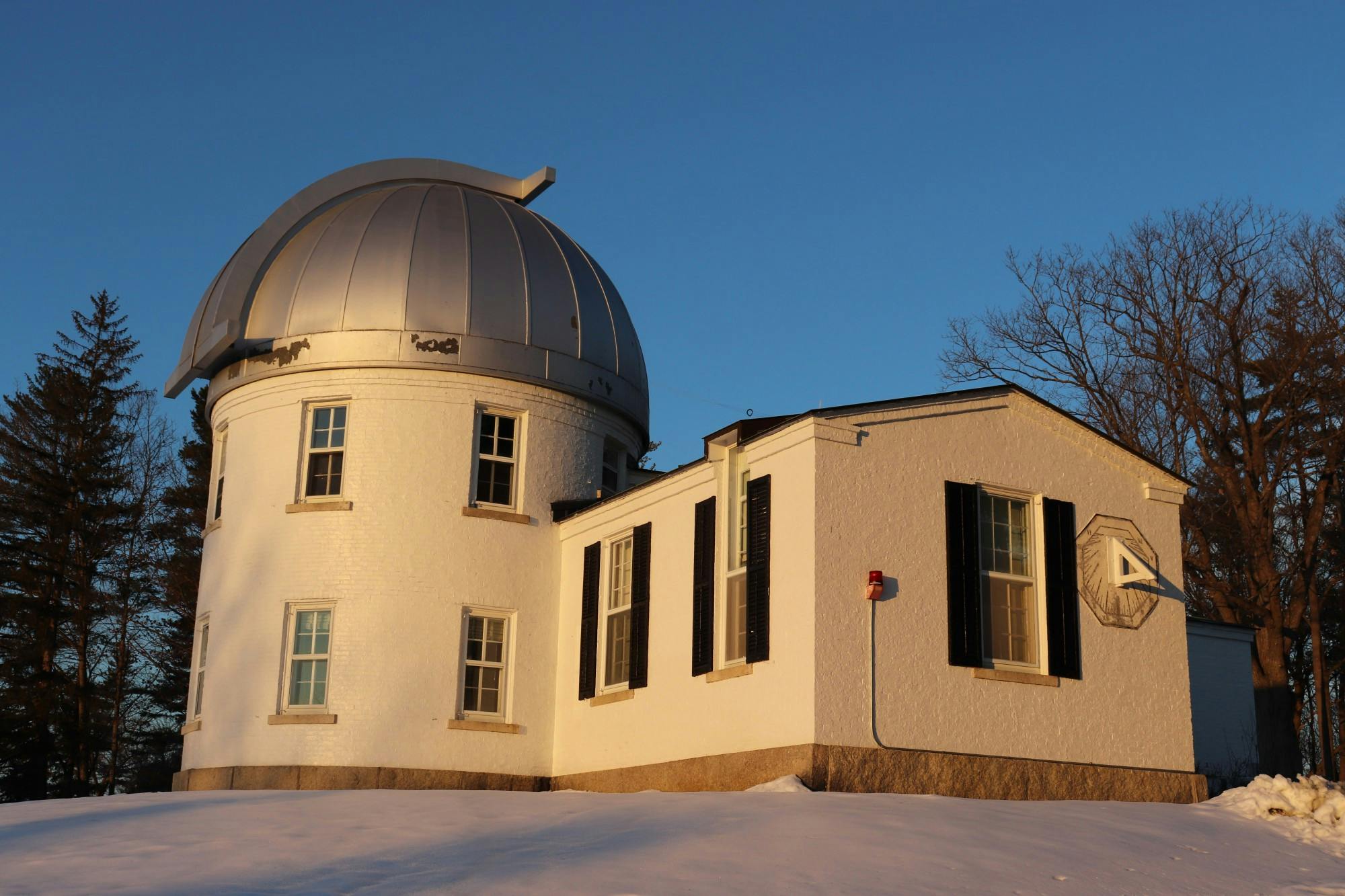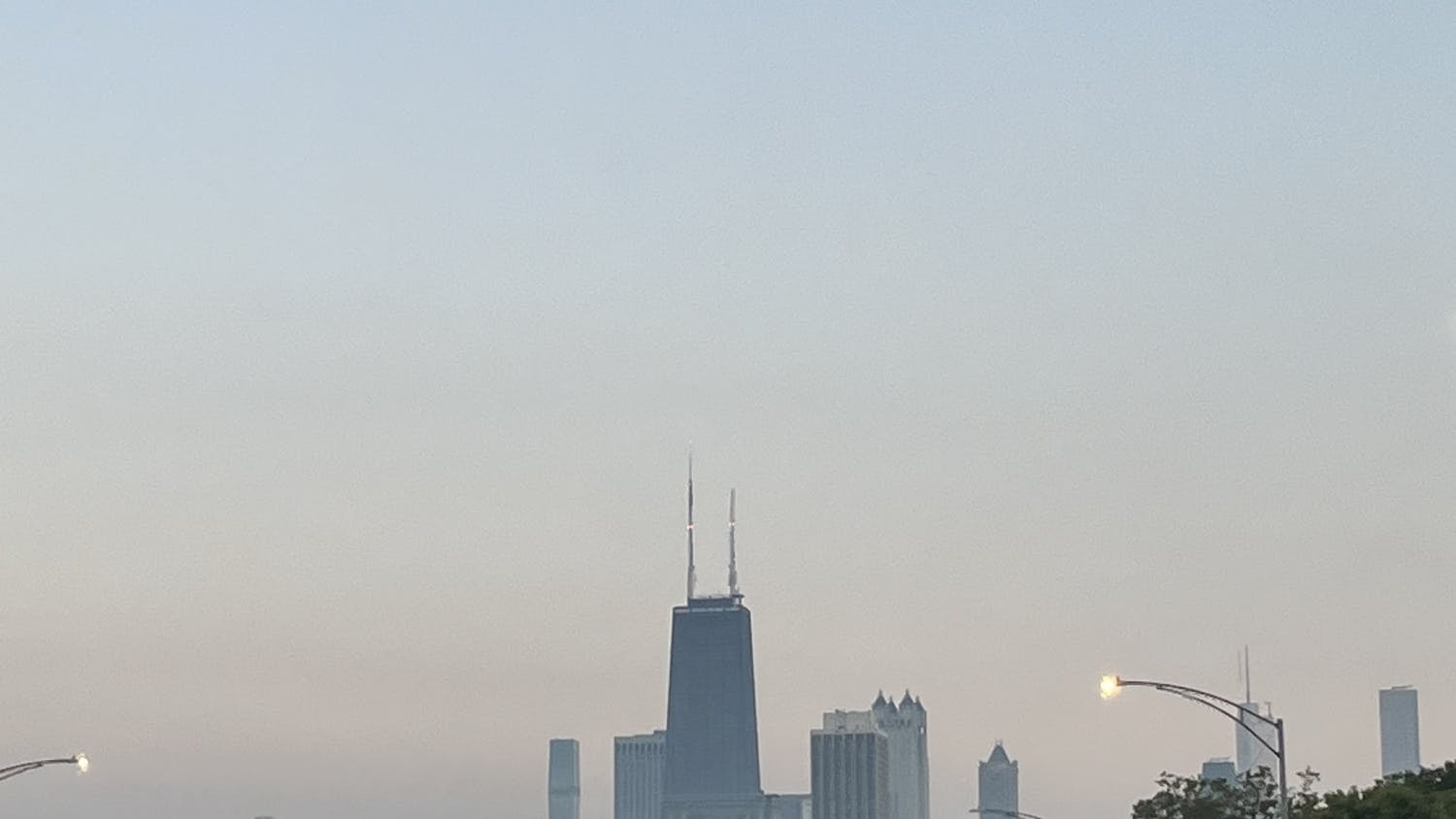This article is featured in the 2023 Winter Carnival special issue.
Shattuck Observatory was opened in the fall of 1854 and now stands as the “oldest of the scientific buildings of the College,” according to Dartmouth Alumni Magazine. The iconic dome is named after George Cheyne Shattuck, a member of the Class of 1804, as one of the main donors of scientific equipment to the College during the mid-19th century. Today, professors and graduate students from the department of physics and astronomy regularly invite students and the wider Hanover community to the Observatory, offering visitors an opportunity to explore the wonders of the night sky.
Physics and astronomy professor Ryan Hickox explained that the Observatory is home to an older telescope from the 1870s, but that the telescope is now rarely used because “it is difficult to keep it in good operational condition.” Hickox noted that the Observatory is now operated and maintained by the physics and astronomy department, adding that the department usually teaches using the North Telescope — located in a shed next to Shattuck Observatory — due to its being “physically smaller but significantly more powerful.”
Hickox said that while teaching ASTR 3: “Exploring the Universe,” he brings students to the observatory for the lab component of the class.
“We do several kinds of observing labs, one of which is called deep sky observing,” Hickox said. “We point at some interesting objects like a cluster of stars or a distant galaxy, and the students make drawings of what they see and do an analysis of what they observe.”
Jack Sinatra ’25 said that he used the North Telescope while enrolled in ASTR 3 in the fall of 2021, which was a “very cool” experience.
“[ASTR 3] is not a course designed for astronomy majors, but rather for people who are a little interested in astronomy and just want to take a fun course,” Sinatra said. “We were looking for Jupiter in the sky, and we were able to figure out where it was with the telescope.”
Sinatra also said that he appreciated the experience as he has an interest in astronomy, and taking the class showed him that “studying these things is possible even outside of being a major or minor.”
In addition to its teaching use, nine graduate students from the department of physics and astronomy also use the telescope to host public observing nights, according to physics and astronomy Ph.D student Thomas Boudreaux. Boudreaux noted that public observing takes place every week for two hours when undergraduate classes are in session — though cloudy weather may cause cancellations.
“If the weather is good, just before the public observing night begins, we roll back the roof of the shed, turn on the computers which control the telescopes and point the telescopes at pretty fun things in the night sky,” Boudreaux said. They added that Jupiter and Saturn are “big crowd pleasers,” and other galaxies and star clusters are also common targets.
Boudreaux added that around 15 people attend each session on average, though the number has ranged from one to about 70.
“For the normal person that comes to public observing, it’s normally a ten to 20 minute event… usually one group shows up at a time,” they said.
Boudreaux added that public observation is open to the general public and that there is a “good split” of attendees — including undergraduate and graduate students, employees from Dartmouth Hitchcock Medical Center and the wider Upper Valley community.
Hickox, as the house professor for West House, has also previously invited West House community members to the Observatory, noting that he would remain at the Observatory after teaching lab classes to host members of the residential community.
“One of the goals of the house system is bringing what we do from the academic sphere into the residential community,” he said. “[Public observing] is very nice for folks who have taken astronomy classes, but sometimes it’s nice to just go with your residence or community from your house.”
Hickox added that he hopes that inviting the house community will help attract students who would not otherwise visit the Observatory.
“It’s really fun and always very enjoyable when someone who’s never looked through a telescope does it for the first time,” he said.
Sinatra said that he attended one of Hickox’s observing sessions in the fall of 2021 through West House, where he was able to see both Saturn and the moon.
Hickox explained that his favorite targets to observe through the North Telescope include Saturn’s rings, Jupiter’s moons and the Andromeda galaxy. He added that in ideal weather, observers can “see some galaxies that are tens of millions of light-years away.”
Boudreaux said that the organizers of the public observing nights are planning to redesign their structure in the spring. They said that apart from regular public observing, other potential events being considered include short talks by astronomy undergraduate and graduate students about their research, indoor planetarium shows using computer software and arts and crafts activities for children. Bourdreaux added that this would also allow events to continue even during inclement weather.
“All undergrads are always encouraged to come attend,” Boudreaux said. “We love getting [undergraduates] at public observing nights, talking to [them] about it and getting the chance to show off the night sky.”




